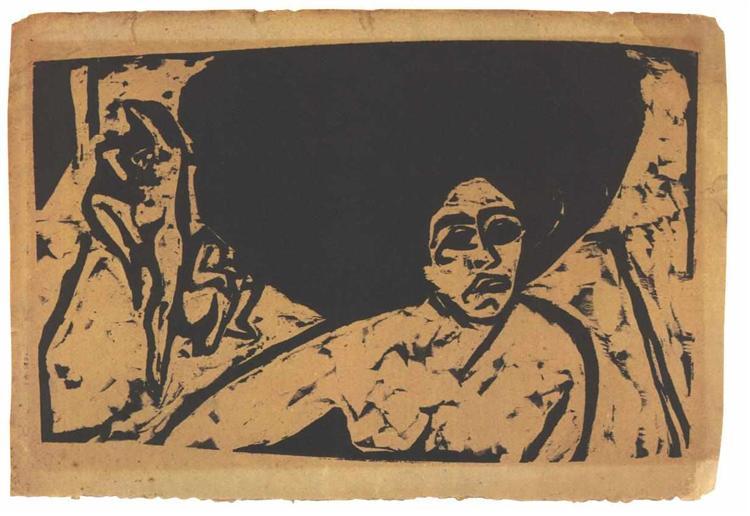Description
Ernst Ludwig Kirchner's "bare dancer" painting is a representative work of German expressionism, a movement that would seek to transmit emotional states through color and shape distortion. Created in 1909, this oil on canvas illustrates the artist's fascination by the female figure and the dynamism of the movement. Kirchner, one of the founders of the Die Brücke group, used his art as a vehicle to explore issues of modern life, anxiety and sensual liberation.
When observing the work, the first thing that attracts attention is the central figure of the dancer, presented in a pose that captures her movement and vitality. The nakedness of the model is not presented as an attempt to provoke, but rather as a celebration of the form and physical expression. The possessment seems to flow, emulating the freedom of dance and energy that emanates from the body in motion, which is characteristic of Kirchner's style. The figure is stylized, with simplified contours and forms that suggest a sense of immediacy and spontaneity.
Kirchner uses a vibrant color palette, predominantly the warm tones ranging from oranges and red to rose nuances. These colors not only provide visual intensity to the work, but also evoke a sense of raw emotion, which faithfully resonates with the theme of expressionism. The brushstroke is loose and energetic, which adds to the feeling of movement and urgency in the dancer's dance.
Regarding the compositional disposition, the figure is slightly decentralized, which creates a dynamism that attracts the viewer's gaze and invites it to explore the painting. The fund is characterized by more dim tonalities that contrast with the main figure, thus accentuating its prominence. This technique of creating an enveloping space that almost seems to be dissolved in the other plane is a manifestation of the expressionist style that Kirchner dominated, where the background becomes an emotional support for the figure.
The work also reflects the influence of primitive art and exotic dances that fascinated Europe from the early twentieth century, exploring the idea of women as a being freed from social restrictions, where nudity becomes a symbol of authenticity and connection with the original forces of nature. This image of the naked dancer, far from being a mere object of contemplation, is erected as an icon of female emancipation and a challenge to the artistic and social conventions of the time.
In the broader context of Kirchner's work and expressionism, "naked dancer" is an example of her search to capture the emotional essence of her subjects. The fluid lines and bold colors are a testimony of their unique style, which challenges traditional structures and seeks to express the complexity of the human soul. Through this work, the dancer becomes a bridge between art and lived experience, symbolizing the tumultuous energy of an era in transition.
In summary, "Naked dancer" is a work that encapsulates the essence of expressionism and genius of Ernst Ludwig Kirchner. Its mastery in the use of color, shape and composition not only present a naked figure as an aesthetic object, but also raise it to a level of emotional and symbolic depth. When studying this work, one can only reflect on the multiple layers of meanings that are intertwined at a frozen moment of movement, liberation and artistic expression.
KUADROS ©, a famous paint on your wall.
Hand-made oil painting reproductions, with the quality of professional artists and the distinctive seal of KUADROS ©.
Art reproduction service with satisfaction guarantee. If you are not completely satisfied with the replica of your painting, we refund your money 100%.

